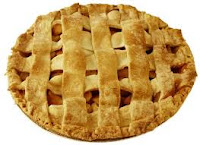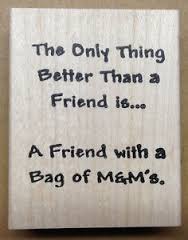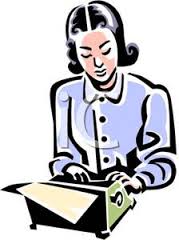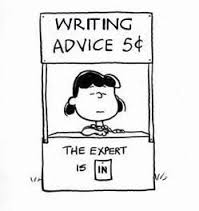A PINCH OF THIS, A DAB OF THAT . . .
And, voila, you have a creation fit for a king.
Well, maybe.
-----
I like to cook. I was recently asked why, and I had to think
about that for quite a while before I could write about it.
Most of us take food for granted. It shows up on the table
when we're little kids and we’re supposed to eat it to nourish our bodies. Also to
keep our moms from yelling at us.
When I was in my mid-teens, around age 15, I began to buy Woman’s Day and Family Circle magazines. They were all about food—well, and other
stuff, but a lot about food. They had food plans for the whole month. They had
articles that focused on one type of dish: meatloaf in many guises; soups for
cold days; soups for hot days; salads, beverages, desserts . . . reading the
magazines was almost a gastronomic delight.
I also began to collect recipes, an activity became a mania—recipes
in magazines, in newspapers, in books I borrowed from the library. Recipes
filled hundreds (yes, hundreds) of 3x5 index cards that I stored in boxes that
said “Recipes” on the outside.
You’ll notice that so far I’ve not cooked a thing. But I was
getting in the mood, reading articles, collecting recipes.
-----
During my mom’s last year with us, I noticed what she made,
asked questions, made mental notes on menus. We had Ham and Beans with homemade
cornbread. Before the hambone was added to the beans, it had graced our table
inside a baked ham served with scalloped potatoes. We ate, on rare occasions,
spaghetti with meatballs (it was never called pasta, just spaghetti; the
meatballs took quite a while to make, so that’s why this was a rare addition to
the menu).
 Macaroni & Cheese was a good winter dish—because it was baked in the oven. No box of mix—just
add butter, milk, and the little packet of cheese sauce. Nossir, we had the real thing.
Macaroni & Cheese was a good winter dish—because it was baked in the oven. No box of mix—just
add butter, milk, and the little packet of cheese sauce. Nossir, we had the real thing.
From my mom I learned how to make two kinds of quick meals—one was
hamburger patties with boiled potatoes and canned peas. The other was something-or-other mixed together and baked; this had the advantage of freeing the cook to fold
laundry, press shirts, dust the living room, or sit down with a cup of coffee
and a cigarette, and put her feet up.
Though I was always good at helping out—in high parlance, I
was the sous chef—I never prepared a
complete meal until after I married. But I did experiment with a few small
non-cooked items: cream cheese balls inside dried apricots, topped with pecan
halves (my mouth waters as I type this); tomatoes sliced and seasoned with
herbs.
-----
Once I married, the heat was on, so to speak. Meals appeared
three times a day—and not by magic or out of a box. Not many women in those
days believed a decent meal could be prepared and boxed up for us to rejuvenate
later.
Thus, I learned to cook from scratch. (Nowadays that’s a
conscious choice, like eating organic foods or growing your own veggies. Back
in the day, it was what we did.)
I created some lovely disasters—one was liver, which came out of
the skillet resembling, tasting like, and smelling like a sautéed old boot. My
mother-in-law taught me how to make palatable liver. Another big mess was
boiled eggs, left on the stove to cook while I went upstairs to investigate
what the kids were doing, or get laundry down the chute to the basement, or
maybe even read a book. Hard to remember the fine details. The eggs, left to
their own devices, ended up boiling dry, the shells cracked, and the insides exploded, managing to decorate the 10-foot kitchen ceiling with
little effort.
-----
If you’ve read this far, you must be wondering why I like to
cook.
I’m still not sure, but I think I can give you some
possibilities.
Like many things in life, cooking started out to be a chore,
a task performed every day to keep a family fed. If a woman didn’t work outside
the home, she could expect to provide meals for her folks.
Let it be said here—I was never wealthy enough to have a
cook who either lived in or came each day to fix meals. I was a stay-at-home
mom long before such a thing was a choice; it was simply what I did—cooked,
cleaned, did laundry, reared the children, sewed, read, played the piano to
help the kids go to sleep, and let the dog out and in, cats ditto, and dreamed
of writing books.
So the first reason I cooked is that it became a
habit. It was what I did for my family. And I discovered I liked doing it.
Another reason is that I learned to be a pretty good
cook—nothing fancy, but I was willing to try new things (though the family
weren’t keen). Those magazines and boxes of recipe cards came in handy.
Eventually, joy comes from doing something well.
Mostly, I think, I enjoyed—and still enjoy—cooking because
it can be a creative endeavor. It takes a pretty creative bent of mind to look
into a nearly empty fridge and conjure up a meal for six with a pound of
hamburger, part of a head of lettuce, and catsup/mustard/
mayonnaise/relish.
There’s always the cupboard where macaroni and canned beans and soups live. So
with one eye on the clock, and the other on the stove (I learned after one
experience with ceiling eggs to keep one eye on the stove), I whomped up
something edible—sometimes it was even good—and never looked back.
-----
Today’s cooking is different in many ways. As a retiree, I
cook for one. Sometimes for two, if one of my kids comes to visit, or a friend
calls and we decide to have a meal.
I no longer have the big holiday dinners at my house. Our family has expanded to nearly 20 people and my house didn't expand with the population
growth. Nowadays we usually meet at my Ohio daughter’s home—it’s in the country
and allows running room outside for little folks with bundles of energy.
Besides cooking for one, I still like to experiment. Salads
are never the same thing twice—herbs and infused olive oils and vinegars make
any salad a new experience. I don’t do the infusing myself; there’s a wonderful
shop in my town that provides more than I could ever hope to taste in my
lifetime.
Another factor is eating gluten free. A few years ago that
meant making everything in the bread/cracker/pastry/dessert line from
scratch. Today, I can shop at virtually any store—grocery or discount—and find GF
foods at affordable prices. I still like to concoct desserts with gluten-free
ingredients, but it’s now a hobby.
 Also, my menu now includes more fresh foods--fruits and vegetables--and lighter cooking techniques. I remember with longing the beef and noodles, fried chicken, and mom's apple pies of childhood--but I prefer to be healthier and have more energy now that I'm in an advanced decade.
Also, my menu now includes more fresh foods--fruits and vegetables--and lighter cooking techniques. I remember with longing the beef and noodles, fried chicken, and mom's apple pies of childhood--but I prefer to be healthier and have more energy now that I'm in an advanced decade.
-----
I suppose the bottom line with cooking, for me, is that I’m
following in the footsteps of many women in my family. Formerly, almost no men
cooked. For one thing, they didn’t have time because they worked outside or at
a job all day. For another—yes, I hate to say it—cooking was women’s work.
Nobody seemed to catch on that all the famous chefs in the
old days were men. Today, you’ll find women chefs, plus lots of folks on the
Internet and TV cooking up a storm.
My time in the kitchen brings up memories of working with my
mother to prepare a meal; eating meals at my grandma’s house—everything
homemade by my grandma and probably one or two of the aunts, plus my mom; teaching my kids how to cook (they never let the eggs explode, thanks
be).
Eating together is an important part of life—whether you’re
alone, part of a family, or a member of a group. Eating together gathers and connects people in ways that other activities don't. For one thing, eating isn't competitive. (Never mind the hot dog eating contests.)
-----
I wish you good eating, good meals with good friends, and joy in the preparation of food. Bon appetit!
 Friendship is
unnecessary, like philosophy, like art... It has no survival value; rather it
is one of those things that give value to survival. --C. S. Lewis (1898-1967)
Friendship is
unnecessary, like philosophy, like art... It has no survival value; rather it
is one of those things that give value to survival. --C. S. Lewis (1898-1967)









